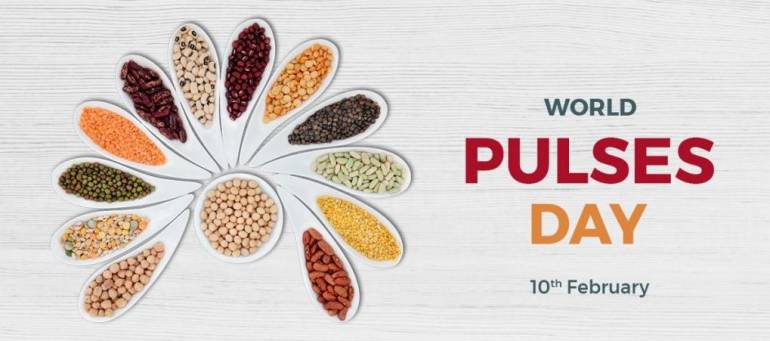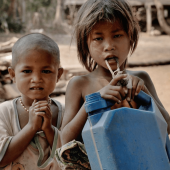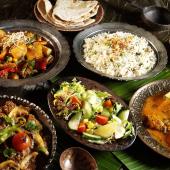UN encourages cultivation and consumption of pulses

World Pulses Day on February 10
Many people do not have access to this nutritious food item, while some are unaware of its health benefits. World Pulses Day is an opportunity to raise awareness of the nutritional benefits of pulses and their contribution to sustainable food systems and a world without hunger.
We consume pulses every day. But did you know there is a day dedicated to celebrating the role pulses play in our lives? Every year, February 10 is marked as World Pulses Day by the United Nations to raise awareness about these valuable food resources.
On December 20, 2013, the UN General Assembly accepted a resolution to understand the true values of pulses. Further, the year 2016 was announced as the International Year of Pulses. In 2018, UN General Assembly marked February 10 as World Pulses Day.
The first World Pulses Day was observed on February 10, 2019. Since then, we have celebrated this day to let people understand the contribution of pulses to the sustainable food system, vigorous growth and environment significance.
The celebration of the year, led by the Food and Agriculture Organization of the United Nations (FAO), amplified the public awareness of pulses' nutritional and ecological benefits as part of sustainable food production. “Nutritious Seeds for a Sustainable Future” was the theme of the International Year of Pulses 2016. After the fantastic success of the International Year of Pulses, Burkina Faso proposed World Pulses Day.
This celebration is a recognition of the decisive role that pulses can play in achieving the comprehensive, far-reaching and people-centred set of universal and transformative goals and targets of the United Nations’ 2030 Agenda for Sustainable Development, a plan of action that seeks to strengthen universal peace.
The day highlights consumption and requests people globally to grow pulses. On this day, donations of pulses are encouraged as they should be accessible to the people who do not have any resources or infrastructure to grow pulses.
In a message last year, Pope Francis stated that pulses can help fight malnutrition and hunger. The pontiff expressed his appreciation for rural and indigenous workers, especially women, who play an important role in producing and distributing food to fight malnutrition and hunger in the world.
Pope Francis expressed an urgent need to cultivate the land without damaging it, so that we as well as the future generations can share its fruits.
Staples dishes and cuisines from across the world feature pulses, from hummus in the Mediterranean (chickpeas) to a traditional full English breakfast (baked navy beans) to Indian dal (peas or lentils). Pulses are inexpensive, easy to store, highly nutritious, and their ability to enhance the soil microbiome has been key in improving farming techniques in low-income rural areas.
In short, the world’s growing population could be fed more sustainably with pulses.
For people in India and many parts of the world, pulses have been the most sustainable, affordable, and versatile food items since time immemorial. These tiny, multi-coloured seeds are loaded with micronutrients like iron, potassium, magnesium, zinc, and B vitamins, making them an overall powerhouse among the food.
Pulses are packed with nutrients with high protein content and are often referred to as a superfood, making them an ideal source of protein, particularly in regions where meat and dairy are not physically or economically accessible. Pulses are low in fat and rich in soluble fiber, which can lower cholesterol and help in the control of blood sugar.
Because of these qualities, they are recommended by health organizations as a compulsory diet to stay fit, strong and healthy for managing non-communicable diseases like diabetes and heart conditions. Pulses have also been shown to help combat obesity.
For farmers, pulses are an essential crop because they can both sell and consume them, which helps farmers maintain household food security and create economic stability.
Furthermore, pulses can contribute to climate change mitigation by reducing dependence on synthetic fertilizers to introduce nitrogen into the soil artificially.
India produces enormous pulses, with an annual output of over 23 million metric tons. The country widely grows pulses like Bengal Gram, Pigeon Peas, Green Beans, Chickpeas, Black gram, Red Kidney Beans, Black Eyed Peas, Lentils, and White Peas.
India accounts for 25% of the global production, 27% of world pulses consumption and imports 14% of pulses. Apart from India, other countries that produce many pulses include Canada, Myanmar, China, Nigeria, Brazil, Australia, the USA, Russia, and Tanzania, while Argentina, France, Ethiopia, and Turkey.
HOW TO OBSERVE #WorldPulsesDay?
Many food organizations hold special events to promote this day. Foodies around the world publish pulse recipes on their websites. Restaurants prepare special dishes made with pulses.
On this day, people are urged to consume and donate pulses and create awareness around it. Many people on World Pulses Day organise lunches or dinners with pulses on the menu. Some indulge in donating pulses to those who may not have access to it for various reasons. Women are encouraged to grow Pulses at home for reasonable economic/financial support. To spread the message on social media, events organised on the day are shared with various hashtags #worldpulsesday, #LovePulses, etc. Since a global pandemic is still prevalent, many people across the globe have decided to hold virtual events wherein there will be seminars on the importance of pulses in our day-to-day lives.
Pulses are critical in addressing the challenges of poverty, food security, human health and nutrition, soil health, and the environment, thereby contributing to the Sustainable Development Goals and the Food and Agriculture Organization’s (FAO) Hand-in-Hand Initiative.
What are your favourite pulses?
Write it in the comments below.
Radio Veritas Asia (RVA), a media platform of the Catholic Church, aims to share Christ. RVA started in 1969 as a continental Catholic radio station to serve Asian countries in their respective local language, thus earning the tag “the Voice of Asian Christianity.” Responding to the emerging context, RVA embraced media platforms to connect with the global Asian audience via its 21 language websites and various social media platforms.














